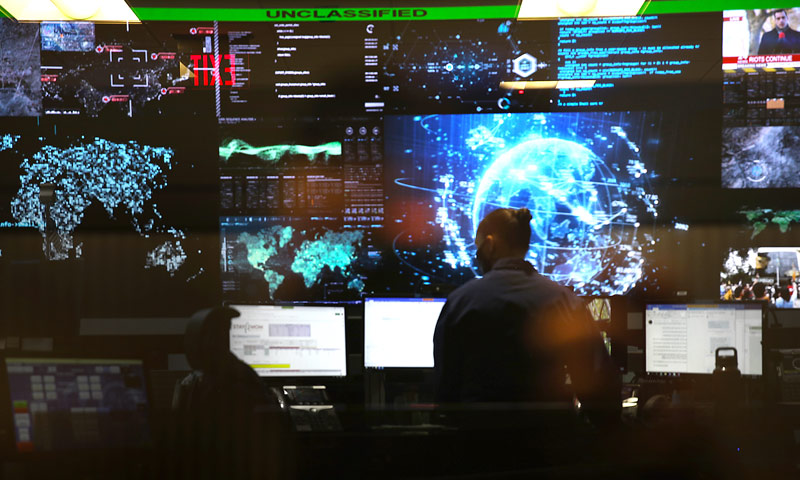In a way that only the Naval Postgraduate School (NPS) can, researchers are in the final stages of a study exploring the convergence of electronic and cyber warfare.
Identifying a roadmap to meet the technological and acquisitional challenges inherent in ensuring American dominance across the future Electromagnetic Spectrum (EMS), this effort has the potential to inform research investments for years to come, according to the project’s NPS lead, U.S. Navy Cmdr. Chad Bollmann, director of the university’s Center for Cyber Warfare (CCW).
“Having the best technology is the first step, but you also have to acquire, integrate and practice that technology if that technology is going to be effective,” Bollman continued. “Cyber is already cross-disciplinary; to effectively analyze the convergence of cyber with another discipline requires a team with technical depth across many areas as well as operational experience to ensure your proposed solutions are ‘Navy-proof’.”
NPS faculty members Bret Michael, chairman of the Cyber Academic Group, and Ric Romero, who runs the Center for Joint Services Electronic Warfare, each brought a wealth of field experience in EW and cybersecurity, respectively. Lt. Col. Michael Senft, Military Faculty Lecturer in the computer science department, is a career Army Information Network Engineering Officer. CCW Faculty Research Associate Darren Rogers recently retired following a 24-year Navy career – enlisted and officer – in the Information Warfare community.
“Having been part of the Navy starting in the early ’90s, I’ve seen first-hand how things have changed with the ever-networked world and the proliferation of technologies the Navy has leveraged in the electronic and information warfare environments,” Rogers said.
It’s the ability to tap into diverse and multi-service expertise like this that truly sets NPS apart, Bollmann stresses, uniquely positioning the university to undertake this study.
“NPS is by nature joint and interdisciplinary,” Bollmann said. “Our ability to combine both the deep academic expertise plus the military practitioners in uniform with diverse kinds of fleet experience and fleet connections really is why we were chosen to conduct this study.”
With recent deployment experience as the Cryptologic Resource Coordinator at Naval Special Warfare Development Group (NSWDG), Lt. Matt Litton, a Navy Cryptologic Warfare Officer and current Ph.D. student in NPS’ Department of Computer Science, provided first-hand operational experience to the depth of the study.
“Combatant commanders are looking for increasingly flexible, low-cost and reversible response options to hold near-peer adversaries at risk, and the convergence of EW and cyber provides a key component of that strategy,” Litton explained.
“At the end of the day, these are distinctions [between EW and cyber] that our adversaries, and even some other services, are not making,” Bollmann added. “That is the ball that has to be moved forward, and Matt’s fresh experience grounds our analysis and recommendations so that we stay operator-centric and focused on Fleet capabilities.”


